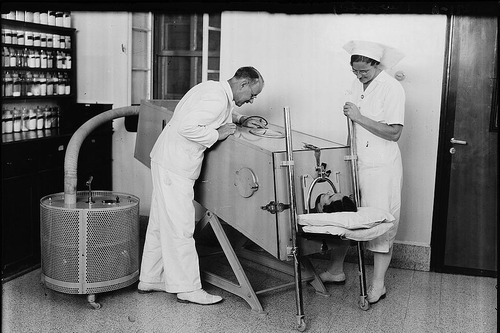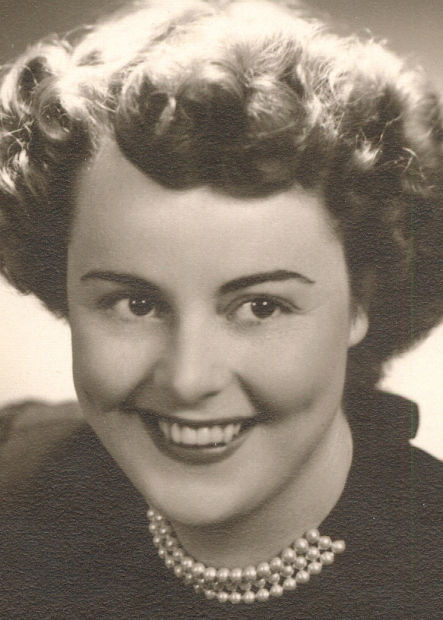The forgotten lesson of the polio vaccine


Before the 1950s, paralytic polio was a scourge. For example, Franklin Delano Roosevelt had been a victim of this, and photos of rows and rows of children in iron lungs were common in the media. The disease was considered a real scourge, as it was, and the study of vaccines was accelerated to combat its spread.
Polio is caused by one of three types of poliovirus that can cause paralysis and death. In the 1950s, two vaccines were independently developed to combat it, one by Jonas Salk and the other by Albert Sabin. Polio has been eradicated and today those vaccines are considered miracle drugs. But how was the evolution of these vaccines and what was their role?
In the early 1950s, Salk was the first to present a vaccine. His was designed to treat all three polio viruses at the same time. His approach seemed elementary enough. He had to grow the polioviruses in the lab, kill them, and then inject the dead viruses into healthy babies. The idea was that dead viruses couldn't reproduce, so they couldn't harm babies. The children's immune system, however, would detect the injected viruses and produce effective antibodies against them, thus creating immunity against polio. A system that appeared extremely effective and was immediately approved for the first mass vaccination.
Shortly before the mass vaccinations began, the Salk vaccine samples were sent to the National Institutes of Health (NIH) for safety testing . There, when bacteriologist Dr. Bernice Eddy injected the vaccine into his monkeys, some of them fell paralyzed and concluded that the virus was not completely dead, never active and could reproduce in its host.

Bernice Eddy
Eddy sounded the alarm and presented his findings. A debate ensued in the halls of power, but the result was that the production was too advanced, the expectations too high, so the inoculations had to be carried out anyway.
The inoculation of the children began in 1955. Within days, a few injected children began contracting polio, even spreading the disease to members of their own families. Subsequent investigations found that the vaccine had caused 40,000 cases of polio, leaving 200 children with varying degrees of paralysis and ten deaths. Alton Ochsner, a professor of surgery at Tulane Medical School, was such a strong advocate of proceeding with the inoculation program that he administered vaccine injections to his grandchildren to prove it was safe. Ochsner's grandson died of polio a few months later and his granddaughter contracted polio but survived.
This fiasco became known as the Cutter Incident . It is named after the vaccine manufacturer. The vaccine was recalled and retested for safety, but the damage had already been done in the public mind.
We continue with the second version of the polio vaccine, Sabin, the most successful one.
In 1957, inactivated vaccines against poliovirus (IPV) and live but weakened oral vaccines against poliovirus (OPV) were prepared in primary cell cultures derived from rhesus monkey kidneys.
According to the American Association for Cancer Research , it was later determined that vaccines made from these cultures were contaminated with the infectious carcinogenic virus SV40. The Centers for Disease Control & Prevention estimate that up to 30% of polio vaccines administered from 1957 to 1963 contained this carcinogenic monkey virus.
Has this resulted in a cancer epidemic? Some believe so, as there has been a sharp rise in soft tissue cancer in the decades since. The medical establishment disagrees, stating that only a "small" number of cancer cases can be traced to polio vaccines. In any case, it was a fact that a carcinogenic virus was present in polio vaccines and that the government kept the public in the dark. This was done to avoid mass hysteria and to prevent the destruction of public confidence in medicine and vaccines in particular.
One result of the damage caused by these early polio vaccines is that strict new safety rules and procedures have been established, but at the same time precisely on the basis of these facts, the vaccine manufacturers demanded and obtained a very broad exemption from the damage resulting from the own vaccines. The classic blow to the rim and the other to the barrel. Meanwhile, at least in Western countries, polio has been eradicated. Its transmission occurs mainly via the faecal route, so it would be interesting to know what role the best hygienic conditions also played. However, if anything teaches this story, it is that in medicine haste is a bad counselor.

Thanks to our Telegram channel you can stay updated on the publication of new articles of Economic Scenarios.
The article The forgotten lesson of the polio vaccine comes from ScenariEconomici.it .
This is a machine translation of a post published on Scenari Economici at the URL https://scenarieconomici.it/la-lezione-dimenticata-del-vaccino-della-polio/ on Sun, 29 Aug 2021 08:08:21 +0000.
